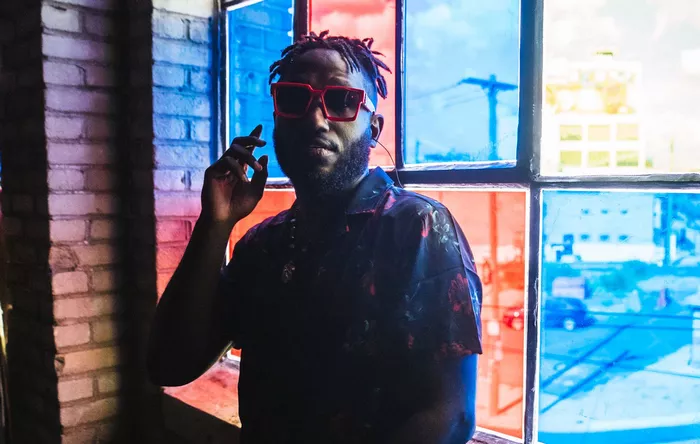In the ever-evolving landscape of hip-hop, a genre known for its ability to adapt and reinvent itself, swag rap has emerged as a distinctive and influential sub-genre. Defined by its unique blend of fashion-forward aesthetics, confident lyricism, and infectious beats, swag rap has captured the attention of a new generation of listeners. In this comprehensive exploration, we will delve into the origins, characteristics, key players, and cultural impact of swag rap, aiming to unravel the intricacies that make it a force to be reckoned with in the hip-hop world.
The Birth of Swag Rap: Roots and Influences
To truly understand swag rap, it is essential to trace its roots and examine the cultural influences that contributed to its emergence. Swag rap finds its origins in the Southern hip-hop scene, particularly in cities like Atlanta and Houston, where artists began incorporating a more flamboyant and stylish approach to both their music and personal image.
The term “swag” itself is derived from “swagger,” a term that originally referred to the way someone carries themselves. Swag rap artists embraced this concept wholeheartedly, exuding confidence not only in their music but also in their fashion choices, lifestyle, and overall demeanor. This fusion of music and style laid the foundation for the swag rap movement.
Key Characteristics of Swag Rap: Beats, Flow, and Fashion
1. Infectious Beats: Swag rap is characterized by its infectious and often minimalist beats. Producers in the swag rap scene prioritize catchy, repetitive hooks and bass-heavy instrumentals that resonate with a party-centric audience. The beats are designed to make listeners move, creating an energetic and danceable atmosphere that sets the tone for the genre.
2. Confident Lyricism: At the core of swag rap lies confident and boastful lyricism. Swag rap artists often showcase their self-assurance through clever wordplay, braggadocious verses, and a focus on materialistic success. The lyrics frequently touch upon themes of wealth, luxury, and the high life, creating an aspirational narrative that resonates with fans.
3. Fashion-forward Aesthetics: Perhaps one of the most visually striking aspects of swag rap is its emphasis on fashion. Swag rap artists are known for their bold and distinctive style choices, which often include designer clothing, flashy jewelry, and unique hairstyles. The fusion of music and fashion in swag rap has not only influenced the hip-hop community but has also left an indelible mark on mainstream culture.
Pioneers and Trailblazers: Shaping the Swag Rap Landscape
Several artists have played pivotal roles in shaping and popularizing swag rap. Among them, three figures stand out as pioneers who have left an indelible mark on the genre:
1. Soulja Boy: Soulja Boy, with his breakout hit “Crank That (Soulja Boy),” can be credited as one of the early trailblazers of swag rap. The song’s success not only propelled him to stardom but also showcased the genre’s potential to reach a massive audience. Soulja Boy’s unapologetic approach to his music and style set the stage for future swag rap artists.
2. Future: Hailing from Atlanta, Future has been a driving force in the evolution of swag rap. His innovative use of auto-tune, trap-influenced beats, and introspective lyrics have elevated the genre to new heights. Future’s impact extends beyond music; his fashion choices and overall aesthetic have influenced a generation of hip-hop enthusiasts.
3. Lil Wayne: Lil Wayne, a veteran in the hip-hop industry, played a crucial role in paving the way for swag rap. His charismatic delivery, clever wordplay, and fearless approach to style have left an enduring impact. Lil Wayne’s influence can be seen in the work of many contemporary swag rap artists who have adopted his bold and unapologetic attitude.
Cultural Impact and Controversies: Swag Rap in the Spotlight
As swag rap gained prominence, it inevitably drew both admiration and criticism. One of the main points of contention is the genre’s perceived emphasis on materialism and superficiality. Critics argue that swag rap places too much importance on wealth, luxury, and external appearances, diverting attention from more socially conscious themes present in other hip-hop sub-genres.
On the other hand, supporters argue that swag rap is a celebration of success and self-expression. The genre, they contend, provides an outlet for artists to showcase their achievements and inspire others to strive for their goals. The unapologetic confidence displayed in swag rap can be empowering, offering listeners a sense of escapism and motivation.
The Evolution of Swag Rap: Trends and Innovations
As with any musical genre, swag rap continues to evolve and adapt to new trends. Recent years have witnessed the incorporation of diverse influences, including elements of trap, drill, and electronic music. Collaborations between swag rap artists and artists from other genres have further expanded the sonic palette of swag rap, keeping it fresh and relevant in an ever-changing musical landscape.
Conclusion
As we look to the future, the trajectory of swag rap remains unpredictable. Will it continue to dominate the charts, influencing mainstream culture and shaping the hip-hop narrative? Or will it undergo a transformation, giving rise to new sub-genres and trends within the broader hip-hop spectrum?
What is certain is that swag rap has secured its place in the history of hip-hop. Its impact on fashion, music, and cultural expression cannot be denied. As artists continue to push boundaries and redefine the genre, swag rap stands as a testament to hip-hop’s ability to adapt, innovate, and captivate audiences worldwide.
In conclusion, swag rap represents more than just a musical style; it is a cultural phenomenon that encapsulates a mindset, a lifestyle, and a form of self-expression. By exploring its roots, characteristics, key players, and cultural impact, we gain a deeper understanding of the forces that have propelled swag rap into the spotlight and solidified its status as a genre with staying power in the ever-evolving world of hip-hop.

